
Long time readers of this site will know my enthusiasm for Charles A. Coulombe. While I do not always agree with the man, I find him a rich, lively erudite author – with a very sharp eye for the problems of modernity and the Church.
His latest effort only confirms that. This is an extremely helpful little e-book – although ‘little’ hardly describes the enormous territory the 66 ‘pages’ it covers.
For the legacy of Pope Benedict XVI, as Coulombe potently reminds us, is truly a vast thing indeed.
Now, this is partly because unlike Presidents, prime ministers or other national leaders, the Holy Father is concerned with the whole world.
But really, it goes beyond that. For the work of national leaders, compared to the Pope, is very much focussed on the here and now – what the unemployment rate in 2013 is for example.
By contrast, the Holy Father addresses a much wider sweep of history. He is not a democratically elected leader who must answer to an electorate; he must consider how he answers to Jesus Christ in preserving the two thousand year tradition of the Church.
Unlike the generally myopic media, the staunchly traditional Coulombe is very aware of this. And with considerable erudition and acumen, he aims to correct media tunnel-vision in a short, accessible presentation.
But precisely because this e-book is both short and accessible, the author necessarily paints his huge canvas in broad strokes.
This is fine. There is a need for two kinds of book in this world. The first type might be called the finely-detailed miniature – something that examines a single topic or a small slice of a larger one, close-up. At the other extreme, we have what might be called the big picture.
The author clearly aims for a very big picture indeed. It is not simply the eight year pontificate of Pope Benedict XVI, nor even the life of Joseph Ratzinger – but one which involves the world that Ratzinger was born into in 1925 – and the world of the Church amidst the crisis of the Twentieth Century.
Indeed, he goes still further: He suggests – rightly – that the only way to understand Ratzinger’s papacy is to begin with 1789 …
Generally speaking, the media, of course, utterly fails to grasp this – for it regularly proves itself incapable of comprehending anything before the 1960s, at the earliest.
Coulombe is piercingly aware of this tragic state of affairs and devotes much of the first half of the book to rectifying that. We say more of this first half below …
But first, we will begin with the second half of the book in which the pontificate of Benedict XVI is helpfully summarised under four major headings.
Coulombe lists these as (i) ‘The internal reconciliation of the Church’ (ii) ‘Cleansing the aberrations that have grown up within Her’ (iii) ‘Reunion with those Christian bodies closest to her (iv) ‘Warning the planet’s powerful of the consequences of their actions’.
These, as said, are Coulombe’s own words. But for the purposes of this review, we will address these four with somewhat different terms, but which I trust are faithful to Coulombe’s meaning:
- The Hermeneutic of Continuity and the Restoration of Tradition
- Cleansing the aberrations of the Post-Conciliar Church
- Reunion with the Orthodox and other bodies closest to the Church
- Responding to Secularism and Globalisation
Let us then proceed with each of these in turn.
The Hermeneutic of Continuity and the Restoration of Tradition
Coulombe begins a fine discussion of Benedict XVI’s attempts to address the terrible internal warfare within the Church that has erupted since Vatican II.
Particular attention, of course, is paid to Benedict XVI’s early, groundbreaking speech to the Curia on what has come to be known as the ‘Hermeneutic of Continuity’. And what the author has to say is so astute, so helpful that we shall quote it at length:
Benedict XVI … declared that there were two interpretations or “hermeneutics” of the Council:
On the one hand, there is an interpretation that I would call ‘a hermeneutic of discontinuity and rupture’; it has frequently availed itself of the sympathies of the mass media and also one trend of modern theology.
On the other, there is the ‘hermeneutic of reform,’ of renewal in the continuity of the one subject – the Church which the Lord has given to us. She is a subject which increases in time and develops, yet always remaining the same, the one subject of the journeying People of God.
The first he accused of ignoring the texts of the Council to follow a mythical “spirit of Vatican II,” whereas the second preserved the truths of the Faith while seeking to present them to the Modern World in a way it could grasp. He made it quite clear which method was true to the Council, the Church, and Christ Himself, and which was not – and in so doing, tacitly condemned what had been forced upon most Catholics around the world in the wake of Vatican II.
So far, so good: Here is an admirable, short summary of a key theme of the last Papacy. But Coulombe’s next comment cuts deeper. It astutely probes what this may truly mean for the future:
Consciously or not, Benedict did something even more revolutionary further on in the talk. Both traditional and modernist commentators on the Council held that it had changed essential dogmas.
In response, conservatives and prelates declared that it had changed nothing, despite appearances – and that to say it had, proved one’s disloyalty to the Church.
But Benedict admitted that the Church’s teaching had been altered in certain very specific areas: the relationship between the Church and modern science; the relationship between the Church and the modern secular state (the American Revolution having shown, in this view, that there are such with which the Church can comfortably co-exist) and the relationship between the Church and other religions.
But he argued that these were not part of the essential deposit of Faith, which the Council retained; rather, the teachings which had been altered – ‘the Church’s decisions on contingent matters – for example, certain practical forms of liberalism or a free interpretation of the Bible should necessarily be contingent themselves, precisely because they refer to a specific reality that is changeable in itself.’
In other words, they could be changed because they were changeable.
But by the same token, one could thereby conclude that the changes made in these teachings at Vatican II are themselves open to alteration [Italics mine].
One’s acceptance or rejection, then, of either the Traditional or the Conciliar stance in these areas could no longer be considered a gauge of his Catholicism – and not being matters of defined dogma, the real question was whether the changes were empirically true.
Given the state of affairs in the early ’60s, one can readily see why the Council Fathers made the choices they did in these areas.
But where science, the secular state, and the other religions have gone since then may open them to question.
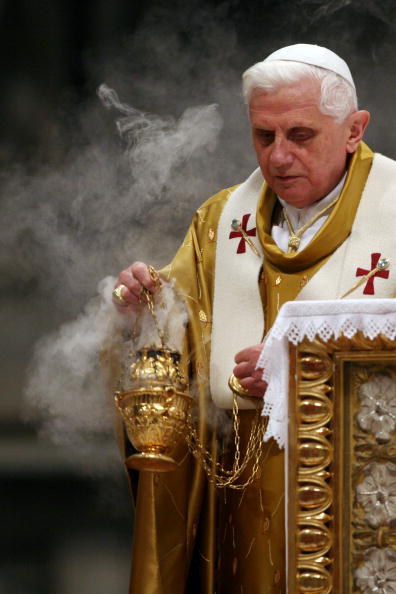
A very great deal indeed is implied here, especially in the last sentence. For the buoyant optimism which reigned in the Sixties has not been borne out – at least amidst the first two realms, those of science and the State.
These have hardly warmed to Vatican II’s gestures of peace and reconciliation. Rather, an ever more aggressively materialistic and anti-religious stance can be clearly seen within both domains.
Coulombe is suggesting, then, that the Council’s decisions at that time should be seen as decisions contingent on a view of affairs which appears, to many eyes at least, to have been proved demonstrably false.
In any event, they are not a ‘super dogma’ as Joseph Ratzinger himself once put it:
The truth is that this particular Council [Vatican II] defined no dogma at all, and deliberately chose to remain on a modest level, as a merely pastoral council; and yet many treat it as though it had made itself into a sort of super dogma which takes away the importance of all the rest.
But to return to Coulombe’s overview of the last papacy:
Pope Benedict’s message was clear: the first tie of unity to be restored was between the pre-Conciliar and post-Conciliar Church. Benedict’s immediate predecessors had rarely appeared to come to grips with the disruption the Church faced head on.
In their public speeches and writings, both Paul VI and Bl. John Paul II would blithely refer to “the many blessings of the Council … (though to be fair, the former had spoken of the Smoke of Satan entering the Church, and the former had apologized to the faithful for all the many insults given the Eucharist after Vatican II).
In response, many wondered jokingly if empty pews and convents were among those blessings! Sarcasm aside, though, where Paul and John Paul had often seemed not to notice the decline of the Faith in parishes and dioceses – or the pain so many had felt at seeing what they cherished in their religion insulted or discarded by their priests – Benedict appeared to ‘get’ it.
‘Sarcasm aside’ – if I have one criticism of Coulombe’s writing, it lies in this. He does, at times, succumb to sarcasm, which is no doubt born from real pain he has suffered many years, alongside so many others. For the author is surely writing of himself amongst a greater multitude here:
The pain so many had felt at seeing what they cherished in their religion insulted or discarded by their priests.
Given this, sarcasm, weariness – even cynicism – are all wholly-understandable things. Now, I have never had to suffer like Coulombe has. Whilst he no doubt felt often tortured back in the 70s and 80s, I was a happy liberal New Ager, cheering liberalism on.
The point here is not my (considerable) shame, but the fact that I do not know what I would be like, had I suffered for as long as Coulombe evidently has.
Still, I think the traditional Catholic cause will be served if we can do our utmost to refrain from the temptation to sarcasm. We are witnessing tragedy on an enormous scale. Sarcasm may even sound flippant next to this enormity.
We would do better to weep openly and our tears will be more commensurate with the searing pain we feel, rather than the ranting to which many succumb.
Coulombe, I should clarify, does NOT rant. He offers very lucid observation, which is only occasionally disserved, I think, by a sarcastic tone that is all-too-understandable, after decades of deep pain that no doubt sears his soul.
But let us return to Coulombe’s point above about Benedict XVI ‘getting’ this deep, searing pain. As Coulombe writes:
The new Pontiff seemed to ‘get’ a lot of other things, too. That without internal reunion of the strands of Catholicism and restoration of discipline with the Church, there could be no external unity that would mean anything. That said external unity was best pursued first with those who had substantial existing commonality with the Church, and that it is essential in facing the tidal wave of secularism that is not merely overwhelming society, but slowly destroying it.
That the fact that most secular governments have come to hate the Church would have to be faced, and also that globalization is a reality the Church cannot ignore.
Above all, he did not shrink from the terrible and wonderful truth that the Church’s founder had commissioned her to “make disciples of the whole world,” and that those who lead her must – if they would claim to be true to Him struggle mightily to enfold all people into her Communion.
Now, given Benedict XVI’s recognition that ‘the first tie of unity to be restored was between the pre-Conciliar and post-Conciliar Church’ it is natural that Coulombe reminds us of the real efforts this great pontiff made to restore tradition.
For they were significant indeed. This needs to be remembered, especially at this time, and I am again going to quote Coulombe in some depth here – precisely because what he writes is so very effective in helping us to remember:
From the beginning of his pontificate, Benedict XVI made a point of showing continuity with past Popes …
He revived many items of the papal wardrobe his post-Vatican II predecessors had dropped by the wayside; the fanon, camauro, mozzetta and papal shoes.
More importantly, perhaps, he resolved to make of Papal liturgies an example for all others to follow.
So he replaced the crucifix at the center of the high altar at St. Peter’s; gave out Communion on the tongue to kneeling recipients; made room for periods of silence at every Papal Mass; expanded the use of Latin and in general fostered beauty at every liturgical function – in marked contrast to what perhaps the vast majority of Catholics encounter in their parish churches.
Benedict also gave the lead for the parishes when he restored his private chapel – ironically called the ‘Pauline chapel’ (after Pope Paul III who founded it) – to its pre-Paul VI state, restoring the marble altar to its former place against the wall so that the Pope could offer the Mass facing eastwards.
It must not be thought, however, that he intended to lead in this area by example alone.
A number of important documents had been issued prior to Bl. John Paul II’s death by the Congregation for Divine Worship intended to rein in the flood of liturgical abuses: among these were Liturgiam Authenticam in 2001, which addressed the unhappy fact that many vernacular translations of the Mass (and especially the English one) were very poor – more paraphrases and called for accurate versions conveying the meaning of the Latin.
This set in motion a process whereby ten years later an accurate English translation hit the altars of the Anglosphere. Benedict had been keen on this project every step of the way – although the bishops’ conferences of some other language-bloc countries are still resistant.
All this, of course, remains profoundly significant, it so far says nothing of a cornerstone of Benedict XVI’s pontificate – his endeavour to restore the Latin Mass.
Now, given the nature of his brief overview, Coulombe does not mention one of the earliest of these efforts: establishing the Institute of the Good Shepherd.
I myself remember the day well, when it was announced. For I was at Lourdes and the firestorm that broke out across France was palpable there!
The Pope has allowed five former priests of the SSPX to return to Rome and found a new institute of dreaded integristes (Catholic integralists) – quelle horreur!
If the return of five of the SSPX’s most moderate priests was enough to provoke fury, it was only a small harbinger of what would follow later – when Pope Benedict XVI dared to restore the Latin Mass and attempted to reintegrate not simply the small moderate wing of the SSPX – but the entire society as a whole.
Let us start with the Latin Mass, for again Charles Coulombe helps us to recall what is really at stake here:
In 2007, he issued a motu proprio – a letter ‘by his own hand’ called Summorum Pontificum which pointing out that the older form of the liturgy having never been validly banned, it was henceforth free to be offered anywhere and by any priest in good standing, regardless of the views of the bishop.
Moreover, the bishops were asked to have it taught in their seminaries. Knowing that many prelates would be very upset by this, the Pope penned an accompanying letter setting fort the reasons for his actions amd asking for the cooperation in implementing the measure. As he wrote:
What earlier generations held as sacred remains sacred and great for us too, and it cannot be all of a sudden entirely forbidden or even considered harmful.
While Summorum Pontificum was joyfully received by many – even some bishops – the usual suspects responded with horror.
A few prelates went so far as to positively forbid their the Tridentine Mass in their diocese by way of response; far more illegally put restrictions of their own on it: only priests fluent in Latin could celebrate it; or only layfolk from the parish attend it; or … whatever other impediment they could think of.
The situation was complicated by the fact that the vast majority of laity had not experienced it, nor could most priests perform it.
In response, the Holy See in 2011 issued an ‘instruction’ on the application of the motu proprio answering and overruling the ersatz restrictions bishops had placed upon it.
Newer orders such as the Fraternity of St. Peter and the Institute of Christ the King as well as a host of smaller ones and individual diocesan bishops and priests have since then worked with ever greater success to restore the Traditional Liturgy to the life of the Church.
But it is slow going, and at the moment only a small minority of Catholics is affected.
Coulombe is all-too-sadly right – only a very small proportion of Catholics have been able to benefit. Pope Benedict XVI no doubt understood this very well – and this fact only underscores his controversial, tremendously brave efforts to reintegrate the SSPX into the Catholic Church.
For Benedict XVI went to extraordinary lengths to effect this reintegration, turning over decades of Vatican policy. I found myself reeling at the spectacle in disbelief sometimes. However, we will let Coulombe continue with this sorry tale:
For both spiritual and practical reasons, the schism with the SSPX was a continuing pain for Pope Benedict- and one he had tried to bridge since long before he became Pope.
After the excommunication of the four bishops in 1988, the SSPX had gone on its way with full seminaries around the world and an ever-expanding network of chapels and churches with a similarly global reach.
Although they had internal problems of their own, they could not help but provide an enormous contrast with the state of so many dioceses and orders in the “mainstream” Church.
If the SSPX could be reconciled, overnight the Pope would have to hand a global network of solid, orthodox communities to act as a real leaven in the Body of Christ – and at the very least its presence would give Summorum Pontificum teeth as recalcitrant bishops hurried to stay competitive.
This last point is an important one, which is not noted enough. Not only would scores of dioceses around the world would have been graced with the Latin Mass – but no doubt even bishops who hated the traditional Mass would have been tempted to abandon their policy of thwarting the Pope’s wishes.
If only as a way to keep the SSPX down, they would have provided the diocesan Masses they were withholding.
Tragically, it was not to be. As Coulombe explains of the SSPX:
Their treatment at the hands of Church leadership and their subsequent years in the wilderness acting as their own ultimate authority had left them both suspicious of Rome and unwilling to settle for less than a complete abandonment of Vatican II by the Holy See – and a small but active part of their membership and the laity associated with them balked at any accommodation with the “Conciliar Church.”
Moreover, opposition to such reconciliation on the part of many of the bishops and some Curia officials was strident.
Nevertheless, negotiations continued between the SSPX and the Holy See. Bishop Bernard Fellay, Superior of the SSPX, had previously declared that no reconciliation was possible without certain basic steps on the part of the Holy See. One was the “liberation” of the Tridentine Mass, which, as we saw, took place in 2007; another was the lifting of the excommunications of him and his three brother bishops.
This occurred in January 2009. Almost immediately, it was revealed that one of the quartet, Bishop Richard Williamson, had questioned [radically, it must be said! – RB] the accepted numbers killed by the Nazis. The uproar on the part of many bishops would have been deafening anyway.
But that of the media over Williamson’s statement was far louder still …
So pained by this reaction was the Pope that he wrote an extraordinarily candid letter to the bishops the following March explaining his reasons for reaching out to the SSPX. His comments therein on the reactions to his efforts were telling:
One gets the impression that our society needs to have at least one group to which no tolerance may be shown; which one can easily attack and hate. And should someone dare to approach them – in this case the Pope – he too loses any right to tolerance; he too can be treated hatefully, without misgiving or restraint.”
Nevertheless, negotiations between Rome and the SSPX continued throughout 2012, waxing warm and waning cold; as the organisations weighed proposals and counterproposals, those on both sides who hoped for reconciliations felt their hopes rise and fall.
Similarly, opponents on both sides did their level best to torpedo any such accord. Finally, Archbishop Joseph di Noia, who had been tasked by Benedict with the negotiations, wrote a letter to each priest of the SSPX dated Advent, 2012, in which he laid out the situation as he saw it. He described in detail the impasse at which the two parties found themselves and the difficulties impeding them and declared God’s grace was necessary for unity.
But there were two important developments in the letter: the Archbishop acknowledged that there had been mistakes on the Roman side [italics mine] and that there was a specific and essential place for the SSPX in the life of the Church.
Unresolved, there the situation lies at Benedict’s renunciation.
Time will only tell if the breach will be healed at some point and the SSPX plays an important role in the ongoing reform of the Church or whether, like the Donatists, the Luciferians and Petit Eglise of times past, they will wait unto eternity for the Church to be completely reformed before they deign to assist her.
Obviously, a speedy reconciliation of the SSPX will help the work of reform tremendously. But whether or not that happens under the next or some subsequent Pope, the foundations that Benedict has laid shall bear fruit. As the generation that remembers the hubbub of Vatican Il passes from the scene, younger priests and laity are rediscovering Catholic tradition – and not merely in terms of the immediately pre-Conciliar era.
As more and more Catholics experience the “Extraordinary Form” of the Mass (as Benedict dubbed the Tridentine Rite) and as the “Ordinary Form” (as he renamed the Novus Ordo) is properly translated and enriched from the Catholic liturgical treasury, the Church will change; she may not look as she did in 1958, but she will look far more different than she did in 1968.
As a parting shot, in 2012 the Pope established a Pontifical Academy charged with spreading Latin in the Church.
Slowly she becomes truer to her Lord, herself, and her children – and in great part this is the greatest legacy of Benedict XVI.
Cleansing the Aberrations of the Post-Conciliar Church
Here Coulombe addresses not only the horror of sexual abuse in recent times, but also other tragedies of the modern Church – for as he notes, these are more inter-related than they might at first appear:
While any organisation that deals with children and adolescents will be a magnet to those attracted to them sexually, be it the Church, Youth Groups, schools, legislative page programs and the like – and so the history of all such institutions boast their scandals – the Church had two particular problems [recently]:
1) In the wake of Vatican II, the structures of supervision of clerical life had been jettisoned as ‘oppressive’ and
2) Society had become ever more sexualised, with the media constantly implying and declaring openly that a life without sex is a life unfulfilled.
Moreover, in the topsy-turvy world of post-conciliar moral theology, such influential journals as Concilium opined that what had been sinful might no longer be – if indeed it ever had been.
Certainly, none of this can ever explain the real horror of what has happened to young people in certain countries particularly (like Ireland and America) and indeed anywhere and everywhere it has occurred.
However, Coulombe’s point remains valid – that post-Conciliar liberal theology has a great deal to answer for. As the John Jay findings in America very clearly suggest, the horror of sexual abuse boomed in the post-Vatican II period – and the instances began significantly dropping after Bl. John Paul II began to re-introduce some semblance of the Church’s former discipline.
It is with this in mind that Coulombe not only addresses the reprehensible aberration of sexual abuse, but also further aberrations of the post-conciliar period, as they affected numerous groups: bishops, theologians, religious sisters etc. And of course, he focusses on Benedict XVI’s efforts towards cleansing and renewal in these quarters.
Noting that, by his own admission, Bl. John Paul II had paid insufficient attention to selecting his bishops, Coulombe sees that Benedict XVI’s episcopal appointments were clearly different.
They would appear to favour bishops much less tolerant of the laxity associated with the so-called ‘Spirit of Vatican II’. Yet again I am grateful for Coulombe’s keen eye for this matter and shall be gratified to hear his observations regarding the new episcopal appointments of Pope Francis.
In a like vein, Coulombe turns his astute vision from the crisis of the bishops to the crisis in the religious orders, exemplified by nuns who seem to prefer ‘the New Age, radical feminism or a sort of pantheistic eco-spirituality’ over the Catholic Faith.
He includes, for example, Benedict XVI’s attempts to discipline the American Leadership Council of Women Religious (LCWR) – an organisation which would seem to be as doomed to eventual extinction through sheer ennui and dwindling vocations as it is determined to be disobedient.
In one sense, it makes for sad, sorry reading – but Coulombe makes one thing clear: After decades of inaction under his predecessors, Benedict XVI had begun to take significant action.
Pope Francis has indicated, I believe, that he intends to continue the investigation of the LCWR. We can only pray that it and many other like things will not only continue, but succeed. The danger to the Church – and thereby the world – is too great for them not to.
Reunion with the Orthodox and other bodies closest to the Church
After this discussion, Coulombe offers a rich overview of Benedict’s outreach to the Orthodox Churches as well as the Anglicans.
His discussion of Orthodoxy is heartening indeed, as Coulombe has evidently been studying – as with so much else! – the situation closely for years. Whilst relations between Catholicism and Greek Orthodoxy have been warmer, the situation, with the Russian Orthodox has been notably frostier – at least until recently.
The fact that things appear to be changing would seem to owe much to Benedict XVI’s tough stance on secularism (covered under the fourth heading below). And so we find Coulombe able to quote these remarkable words from the Patriarchal external affairs officer Metropolitan Hilarion of Volokolamsk:
Even before his ascension to the See of Rome, Cardinal Ratzinger declared war on ‘the dictatorship of relativism’ so typical for the Western society today. It immediately made him unpopular in the eyes of secular politicians and journalists. Pope Benedict XVI is not a media star. He is a man of the Church. In the mass media, he is continuously criticized for traditionalism and conservatism, but precisely these merits of his are of credit for millions of Christians, both Catholic and non-Catholic, those who seek to preserve traditional Christian spiritual and moral values.
It remains only to hope that his successor will continue walking along the same path and that Orthodox-Catholic relations will continue developing progressively for the common good of the whole Christendom.
As all-important as relations with Eastern Orthodoxy undoubtedly are, I found myself even more moved by Coulombe’s treatment of the Anglican Ordinariates – yet another controversial (and very beautiful) landmark of the Ratzinger years.
Briefly, but movingly, Coulombe sketches out the Anglo-Catholic movement from the Nineteenth Century onward. I myself had little idea how rich that tradition was, nor how closely many Anglicans had moved towards the Church – prior to the Anglicans’ pivotal decision to ‘ordain’ women (among others).
Coulombe’s sheer erudition scores yet another goal with me: I now appreciate, even more than I did before, the courageous beauty of Benedict XVI with regard to the Ordinariates. Indeed, I found myself wishing to seek out an Ordinariate liturgy – something I have not yet troubled to do.
Responding to Secularism and Globalisation
Finally, Coulombe turns to the fourth key area of Benedict XVI’s pontificate, as he identifies it. This clearly involves a New World Order – a globalised order spearheaded by dominant elites, who would hurl us ever further down the path of a more aggressively secular, materialistic society. As Coulombe writes:
What has characterised all of Benedict’s dealings with the powerful of this Earth has been his willingness to tell them uncomfortable truths, regardless of their reaction.
Their family and population policies have generated demographic collapse, reduced sex from the sacred to the trivial, and produced several generations of individuals cut off from any strong attachment to anything but themselves.
Their attempts to remove religion and particularly Christianity from public life have cheapened life immensely in every sense of that term and cut their subjects off from both their cultural roots and their own spirits.
Their economic and social policies have been disastrous – viewing their citizens as mere income producing units has created a shambles of both the world and national economies.
And we cannot help adding to all this a recognition of the plight of our children. For Benedict XVI certainly saw that our children were being robbed. New generations were growing up in an ever more materialistic, sexualised, brutalised environs, robbed of Christ and his Church.
Benedict XVI’s heart, I believe, burned with compassion. Here is why he challenged global elites in the way he did. Here, for example, is Benedict XVI addressing the British Parliament – as Coulombe has quoted in his book:
I cannot but voice my concern at the increasing marginalization of religion, particularly of Christianity, that is taking place in some quarters, even in nations which place a great emphasis on tolerance. There are those who would advocate that the voice of religion be silenced, or at least relegated to the purely private sphere.
There are those who argue that the public celebration of festivals such as Christmas should be discouraged, in the questionable belief that it might somehow offend those of other religions or none. And there are those who argue – paradoxically with the intention of eliminating discrimination that Christians in public roles should be required at times to act against their conscience.
These are worrying signs of a failure to appreciate not only the rights of believers to freedom of conscience and freedom of religion, but also the legitimate role of religion in the public square.
And Coulombe rightly adds:
Although addressing a British audience, Benedict’s message applied to Europe, North America, and many other places – underscoring why the Russian Orthodox saw an ally in him.
In the France of Francois Holland as in the United States of Barack Obama, those of Benedict’s flock who preferred to form their consciences according to their Church rather than their media saw in him a leader who understood precisely the situations in which they found themselves.
However, as Coulombe notes, many of these same people were troubled by Benedict XVI’s apparent support for institutions like the United Nations and the European Union, which so often opposed the Church, which so often seemed to be actively promoting the culture of death …
How, then, can one explain what Coulombe describes as ‘the most controversial statement’ of Benedict XVI’s papacy:
To manage the global economy; to revive economies hit by the crisis; to avoid any deterioration of the present crisis and the greater imbalances that would result; to bring about integral and timely disarmament, food security and peace; to guarantee the protection of the environment and to regulate migration: for all this, there is urgent need of a true world political authority.
The key, it would seem, lies not so much in Benedictine enthusiasm for such things, but his confrontation with grim reality of a capitalist-driven globalisation. As Coulombe expresses it:
As with all of the moral and other issues commentators and rulers avoid, so too with the great practical fact of our time – globalisation: Benedict was willing to face the reality head on. He did not endorse this process, but accepted it as a reality and dealt with ways to make it more human – less despotic – which he warned it could easily become.
The Pope called for two key things on the part of all institutions concerned, from village council to the General Assembly: Solidarity and Subsidiarity.
Of course, given how little most modern regimes care about either of those qualities, the cynic might be forgiven for thinking that a super-authority made up of the same kind of people would care either.
Coulombe is right, of course – the last presents real danger. However, I tend to think that Benedict XVI saw no option but to foster the lesser of two dangers.
He saw how much unbridled capitalism was creating the soulless, brutalised world our children stood to inherit. And for all their flaws, he trusted that bodies like the UN and the EU were more likely to be persuaded of things like Solidarity and Subsidiarity than the mighty, devouring global corporations.
Vatican II, Modernity and the French Revolution
But we said above that this fourfold summary of Benedict XVI’s legacy mainly occupies the second half of this e-book. It remains, then, to say just a little more of the first half – which is really very enriching and absorbing, just in itself.
Unsurprisingly, much of this first half concerns Vatican II and the chaos which followed in its aftermath.
Naturally, it also features the role of the young liberal Joseph Ratzinger at the Council – as well as the older, sadder, wiser Joseph Ratzinger trying to clean up the mess, under Bl. John Paul II.
However, all this is placed in a still wider context. For, as we said, Coulombe clearly understands the monstrous distortions created by the media – either (rarely) from conscious malevolence or (much more often) an inability to grasp any sense of history, beyond that forged by post-60s liberal secular forces of propaganda.
Yes, Coulombe understands this all too well.
As I write these words, I cannot help but sigh. Because I spent so many years myself amongst the propagandised.
For I can still recall coming across a much younger Charles A. Coulombe on the web around the turn of the millennium. He had a site back then called the Cool-Ohm zone and I recall thinking him half-mad.
May he forgive my sheer obtuseness! By then, I was no longer the liberal New Ager I had been, but had become a (semi-schizophrenic) liberal Catholic instead.
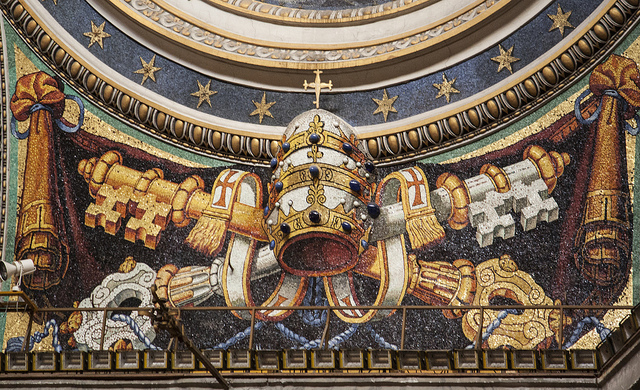
But I was haunted, haunted by the mysterious things that Valentin Tomberg was saying (here) about the tragic collapse of hierarchical structures in Europe.
They seemed crazy, scandolous things this Tomberg was saying, but somehow they led me to the ‘crazy’ Catholic monarchist Coulombe.
Now, clearly Coulombe’s views were based on an understanding of history far, far superior to my own at that point. Nonetheless, how sure I was that my far less-educated, liberal view was certainly correct: Coulombe was just some old dinosaur.
Today, I am very happy to publicly eat my humble pie, for it may help to illumine just why Coulombe takes such pains to set the stage for Benedict XVI’s papacy in 1789:
The chapter of … history in which we are now living may have said to have begun with the French Revolution of 1789. The more simpleminded are tempted to portray that year as the dividing line between darkness and light (which side was which of course depends on one’s point of view); it was more complex than that.
But whether one sees that date as the overthrow of medieval darkness or the eruption of Satanic horror, what is certain is that across Europe oceans of blood were spilt (including that of King Louis XVI and his family), age-old political institutions overthrown and replaced with new constructions imagined from whole cloth, and the Church bereft of many murdered priests and religious and despoiled of innumerable properties.
Moreover, she no longer held the dominant place in the atmosphere of ‘Catholic” Europe that she had had. Two Popes had been exiled and imprisoned, and one of them died in that exile.
But by the time the dust cleared in 1815, reaction had already begun. Many of the members of the Romantic movement that swept Europe in the wake of Napoleon either were or became fervent Catholics or at least admired the art and history the Church had produced.
With so many churches ruined and religious orders dispersed, a positive fetish for reconstruction occurred in every facet of Catholic life: architecture, liturgy, devotions, social teaching. and much else.
Despite the apparent corking of the revolutionary genie back into the bottle, however, it reemerged, especially the form of ever more centralising governments.
These regimes were seen as one facet of ‘modernity’ alongside such developments as the industrial and scientific revolutions, the growth of nationalism, and the emergence of an industrial-banking ruling class (Marxism, a reaction to this latter development, nevertheless inhabited the same de-supernaturalised world view as that of its bourgeois opponents).
The idea that government could he carried on without reference to religion became ever more popular; as the nineteenth century wore on, the Catholic Church in Europe and Latin America fought a succession of conflicts with various ‘liberal’ (an extremely elastic word) regimes.
The best churchmen ever achieved in these skirmishes ranging from political fighting over divorce and control of education to outright warfare was a draw – it was in the course of one such that the Papal States were lost.
Nor was this struggle confined to legislatures, courtrooms, and battlefields. Universities, journalism – even literature and the stage were fields of combat.
What can I say? That younger, liberal self of mine knew almost nothing of what Coulombe intimates here. He knew only one part of the story – the part that liberal propaganda provided him his whole life long.
He knew nothing, for example, of how a truly vicious secularism had crushed the Church in France and other parts of Europe. He knew nothing of things like the loss of the Papal States, which Coulombe has chronicled in a poignant book (reviewed here).
Today, he is clearer – and men like Coulombe have done much to educate him. But he realises how very few folk know this history of the ugly ways secularism triumphed in the West.
Coulombe is one of very few who does know and renders a brief account of it – again in broad, yet rich strokes – in this latest effort. What Colulombe has to say is so important, so little heard, that I would like to keep quoting from him.
However, we must skip ahead from the Nineteenth Century to the liberal 1960s, whereby the author relates how many prelates and theologians had finally bought into liberalism. This is to say, as Coulombe writes, they now wondered whether:
The uniformly negative reaction of Church authorities to post-1789 “modernity” was simply wrong – or at least, had become outmoded by the turn of events.
Shell-shocked in a sense as they were by the World Wars which had wiped away most of the old Christian Social Order (weakened, as we have seen, as it was), such folk believed that this modernity could be tamed and, as it were, “baptized’: The United States was seen as a good example of how this might be done.
Certainly, as far as these folk were concerned, the identification of the Church with Monarchy, Nobility, and Conservatism in general had been a hindrance rather than a help to its mission.
But as Coulombe’s little e-book on Benedict XVI richly suggests – at so many turns – the Catholic experience since Vatican II is hardly convincing.
For it hardly seems that either materialistic modernity can be tamed (let alone baptised!) – or that the Vatican II détente with modernity has led to much of anything at all – apart from obvious decay of the Faith.
Here is why Coulombe convinces me, at any rate, that all this is very relevant to the understanding the last Papacy.
Benedict XVI saw something severely problematic with modern Catholicism’s trashing of tradition to accommodate modernity.
Although he was not willing to go as far as either Charles A. Coulombe or Valentin Tomberg in saying a firm non to the revolutionary spirit of 1789, he nonetheless began to turn in directions that had once been unthinkable.
Most astonishingly, as we have noted, he started to reverse decades of Vatican policy regarding the SSPX. Most courageously, he risked the wrath of a propagandised world that would pour down hate on his weary, lonely shoulders.
Benedict XVI did not try to court worldly popularity – because, unlike almost anyone these days, he understood the history behind modernity, the history that Coulombe sketches for us here.
I confess it to you, frankly, dear Reader. Charles A. Coulombe has been a teacher to me. He has helped me understand those difficult things that Tomberg first pointed me to, when I was so cocksure of a liberal version of history I hardly understood.
This does not mean I agree with everything Coulombe has to say. But I have learned much from him. He has helped me shake off my liberal prejudices.
Many other people, I think, can also learn from him – again without necessarily having to agree on every point.
It is in this spirit that I heartily commend this inexpensive e-book. Coulombe convinces that his big picture from 1789 onwards is crucial to understanding the mind of Benedict XVI.
You will look hard indeed I think to find this picture in the media – but you can download a very short, rich accessible version of it onto your mobile device or computer.
At the risk of hard sell here, I urge you to consider it. And if you do so, to buy it from this website – for you will not only support Coulombe’s worthy work, but our own much more humble project for guarding Catholic tradition.
End of hard sell – except to say I would only write like this about something I thought was truly valuable . . .
Buying Books at Amazon Through These Links Gives Us a Commission. This Supports Our Apostolate. Thank You if You Can Help Us Like This!



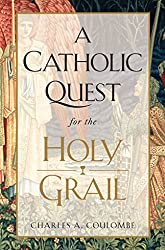


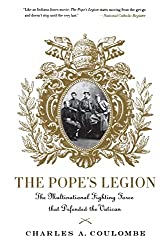

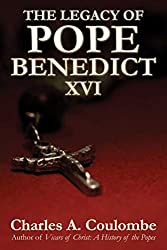
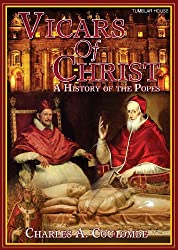
Comments
comments are currently closed
2 responses to “The Legacy of Pope Benedict XVI (an Overview by Charles A. Coulombe – Reviewed)”
[…] (Note: the above is taken from Coulombe’s excellent small book The Legacy of Pope Benedict XVI which I have reviewed here with much more quoted material regarding …) […]
[…] from numerous Catholic traditionalists – people like Romano Amerio, Michael Davies or Charles A. Coulombe – for years now. How much could Sire tell me that was new? At least, that would […]